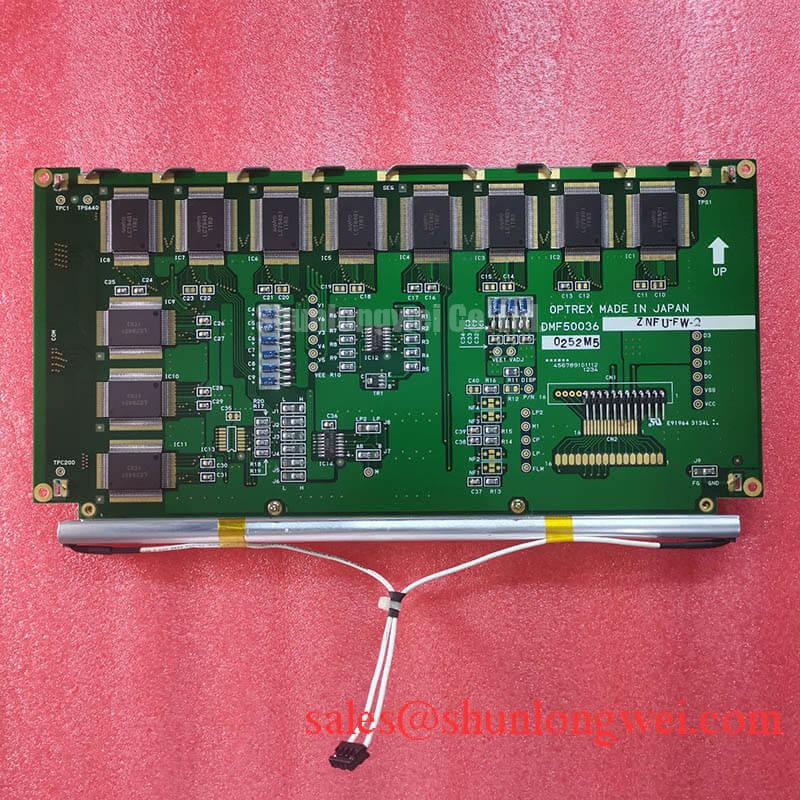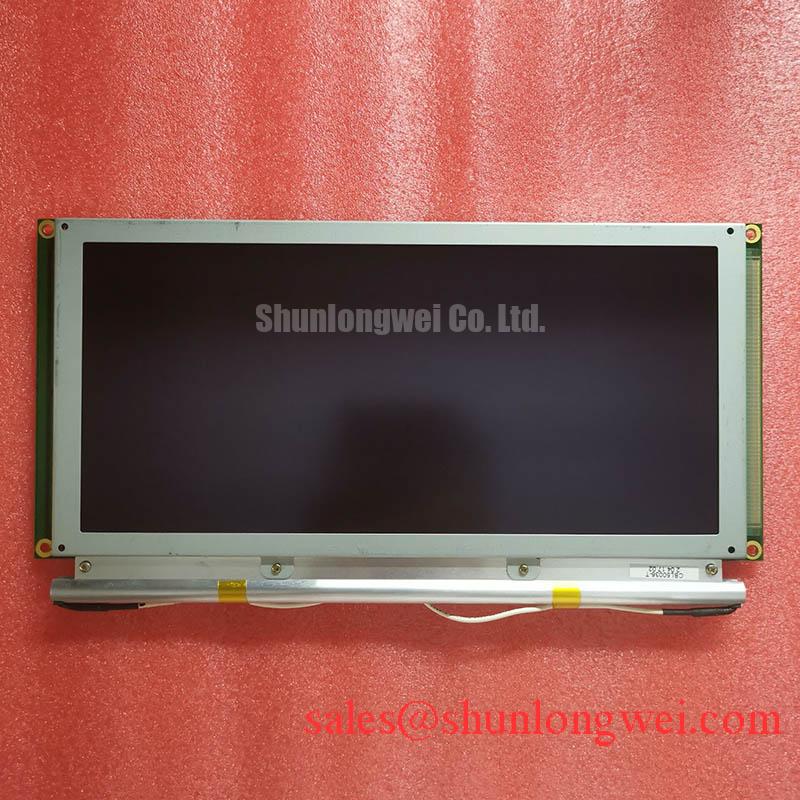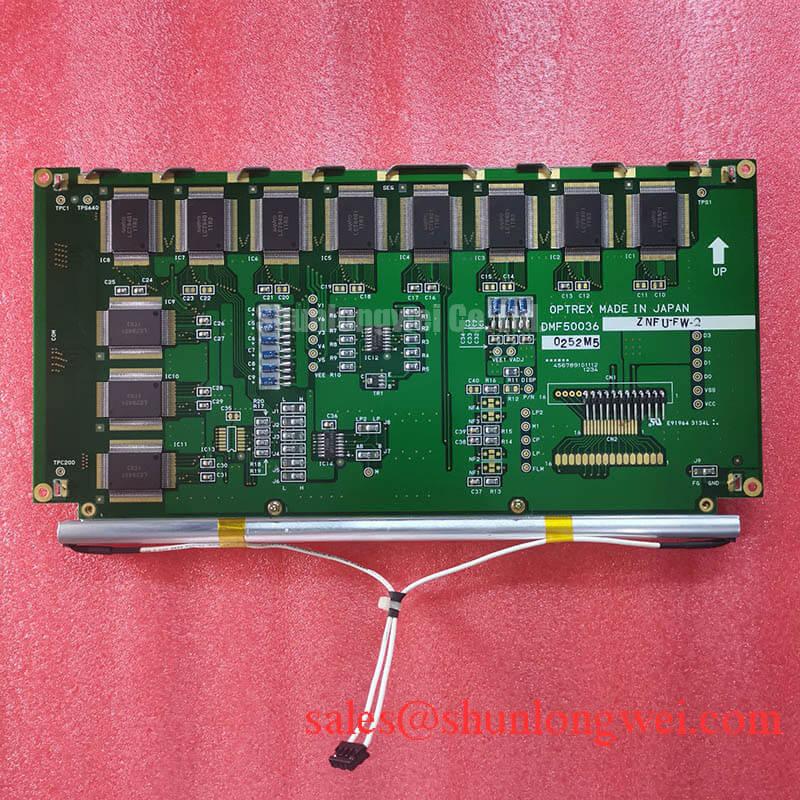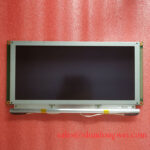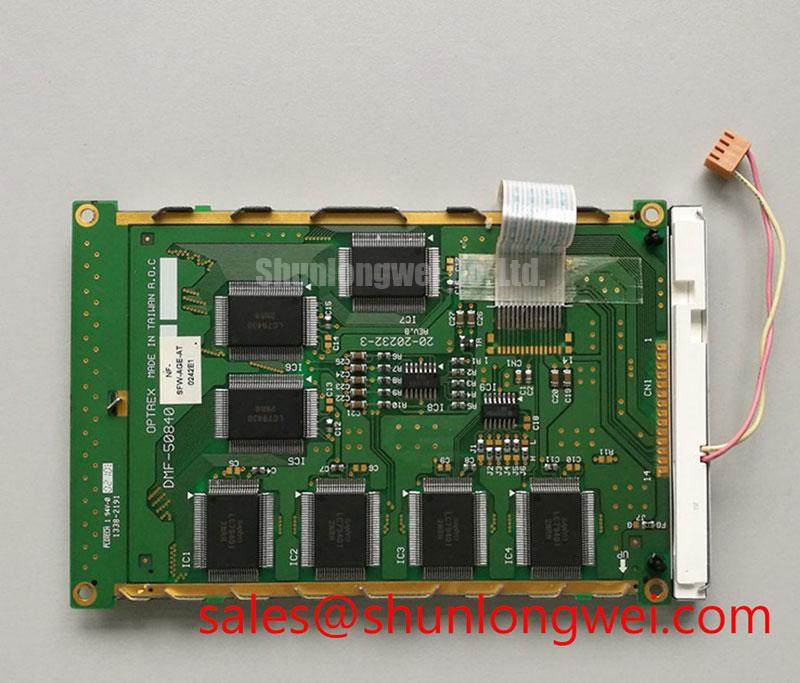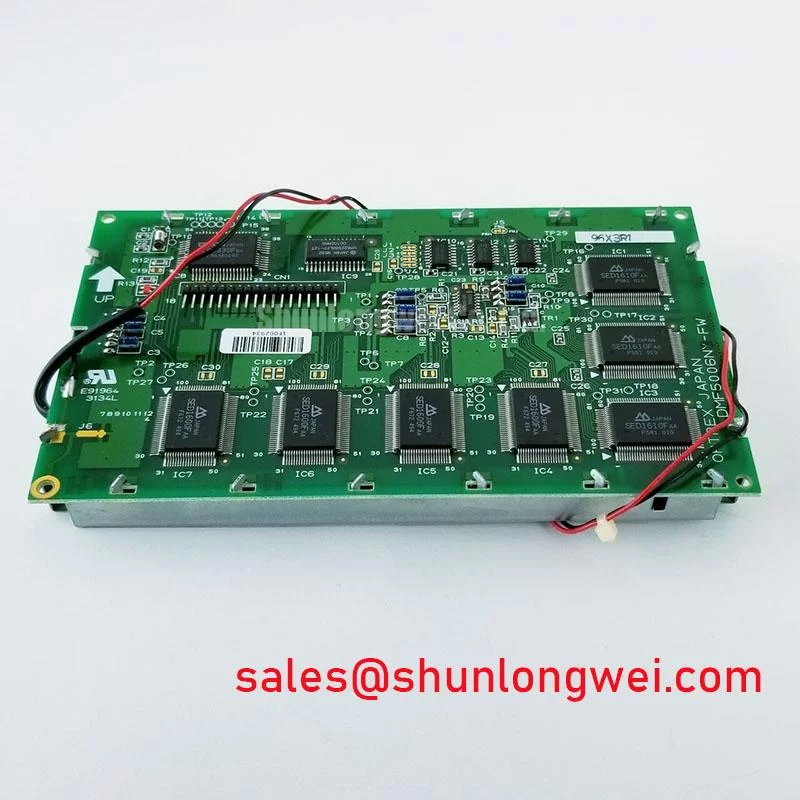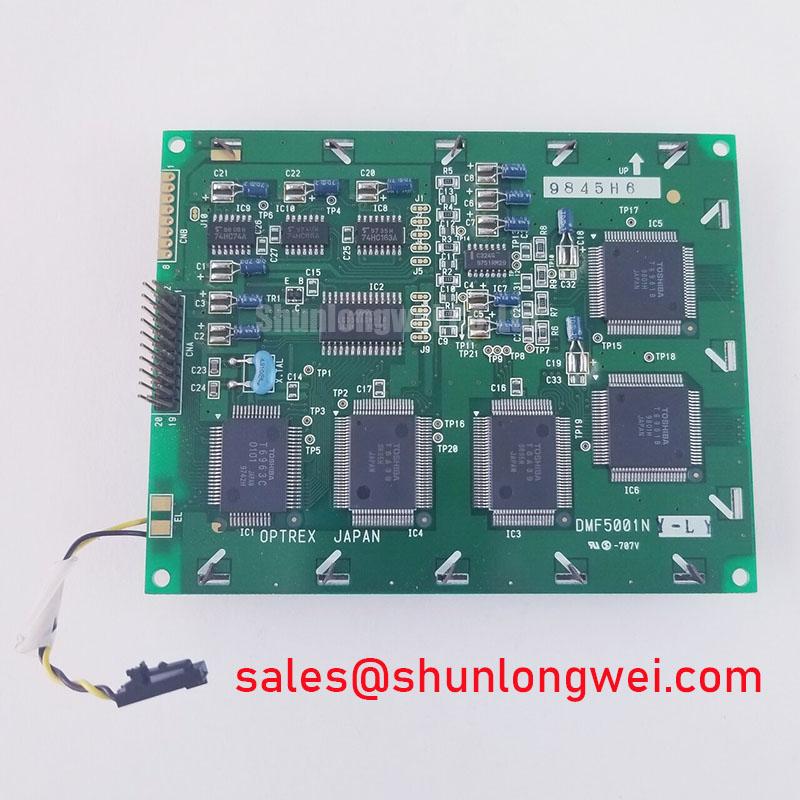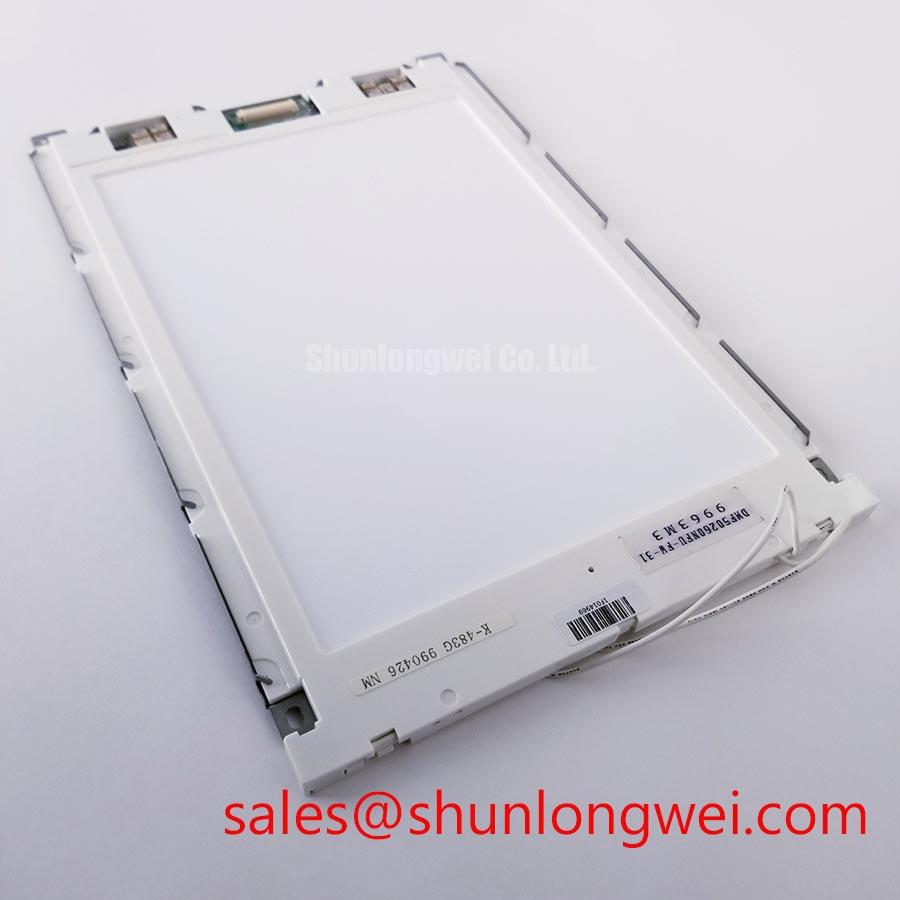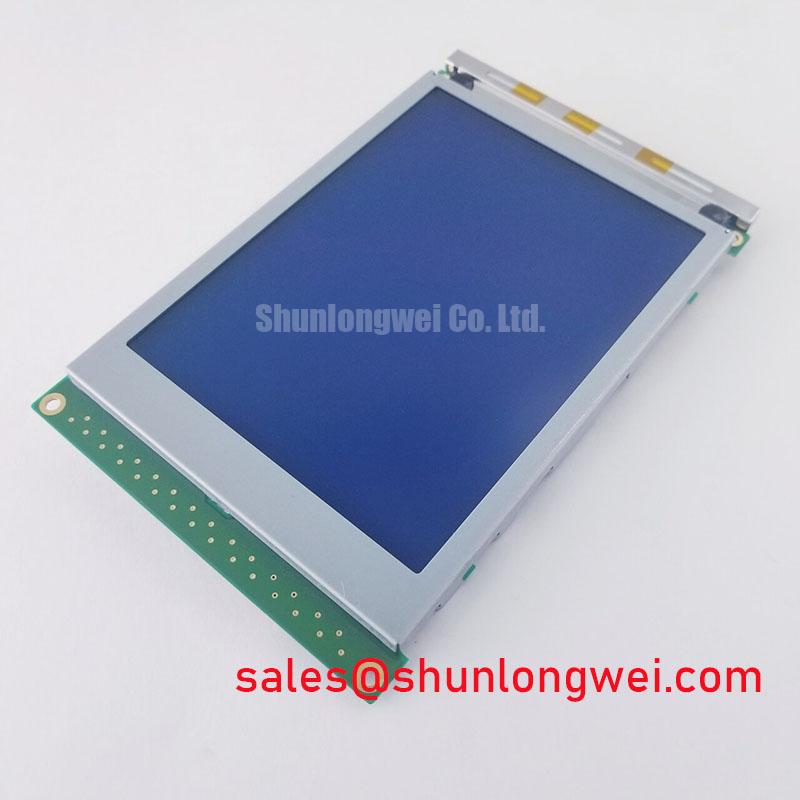Content last revised on November 15, 2025
Optrex DMF50036 Series: Engineering Analysis of a Monochrome STN Graphic Display Module
Introduction and Key Specifications
The Optrex DMF50036 series, encompassing models like the DMF-50036ZNFU-FW-BBN, is a monochrome graphic LCD module designed for clear and reliable information display in instrumental and industrial applications. It delivers functional clarity through its 640x200 pixel resolution and integrated Cold Cathode Fluorescent Lamp (CCFL) backlight. Key specifications include: 9.6-inch diagonal | 640 x 200 resolution | FSTN LCD Technology. This design provides high-contrast text and graphic capability and ensures long-term operational stability. For systems requiring robust, straightforward graphical interfaces without the complexity of full color, this display offers a proven and efficient solution. What is the primary benefit of its FSTN technology? It provides superior contrast and a wider viewing angle compared to standard STN displays.
Application Scenarios & Value
System-Level Benefits in Instrumentation and Control Panels
The DMF50036 is engineered for applications where unambiguous data presentation is critical. Its 640x200 resolution in a wide 21:9 aspect ratio makes it particularly suitable for control panels, test and measurement equipment, and early-generation medical monitoring devices that require the display of waveform data, status menus, and diagnostic information simultaneously. The monochrome FSTN (Film-compensated Super-twisted Nematic) display mode provides a crisp black-and-white image with a typical contrast ratio of 10:1, ensuring readability under various indoor lighting conditions. The integrated CCFL backlight, with a typical surface luminance of 50 cd/m², is designed for longevity, rated for an average life of 10,000 hours, which translates to sustained performance in long-running industrial processes. For systems needing different resolutions or sizes, modules like the KCG057QV1DB-G000 or the G084SN05 V9 offer alternative display solutions.
Key Parameter Overview
Decoding the Specs for Integration and Longevity
The engineering value of the DMF50036 lies in its straightforward and robust design parameters, which simplify integration and ensure predictable performance over the product's lifecycle. Understanding these key specifications is crucial for successful implementation.
| Parameter | Specification | Engineering Value & Interpretation |
|---|---|---|
| Display Technology | FSTN (Film-compensated STN) | Enhanced Readability: The compensation film corrects optical dispersion, resulting in a higher contrast, sharper image, and wider viewing cone compared to standard STN displays. Think of it as adding polarized sunglasses to a basic screen to cut glare and improve clarity. |
| Resolution | 640 x 200 Dots | Information Density: This specific resolution is optimized for text-heavy and simple graphical interfaces, allowing for multiple lines of characters or basic waveform display without the driver overhead of higher-resolution panels. |
| Backlight System | 1-CCFL with 10,000-hour average life | Operational Reliability: The Cold Cathode Fluorescent Lamp is a mature technology known for stable output. A 10,000-hour lifespan (time to 50% initial brightness) ensures long service intervals, reducing total cost of ownership in industrial equipment. |
| Interface | 4-bit Parallel (datasheet specific) | Simple Integration: This parallel interface is common for monochrome displays and is easily driven by a wide range of microcontrollers, minimizing the need for complex graphics controllers or specialized FPGAs. |
| Operating Temperature | 10°C to 40°C | Application Environment Definition: This range specifies the module is best suited for controlled indoor environments, such as laboratories, factory floors, or control rooms, rather than outdoor or extreme temperature applications. |
Download the official datasheet for detailed specifications and performance curves.
Technical Deep Dive
A Closer Look at the CCFL Backlight and Power Sequencing
A critical aspect of integrating the Optrex DMF50036 display is the proper management of its CCFL backlight and the power supply sequence. The CCFL requires a dedicated high-voltage inverter to achieve its starting voltage (up to 900 Vrms) and maintain its operational lamp voltage and current (typically 5.0 mArms). The datasheet specifies a precise power-on/off sequence. The logic voltage (VCC) must be stable before the LCD driving voltages (VEE, VADJ) are applied. Failing to adhere to this sequence can supply a DC component to the liquid crystal, which can lead to permanent damage to the panel. This is analogous to engaging a car's transmission before the engine is running smoothly; it puts undue stress on the system and can cause catastrophic failure. Effective system design must incorporate this timing logic to ensure the display's 10,000-hour rated lifespan and prevent premature degradation.
Frequently Asked Questions (FAQ)
What is the typical application for a 640x200 monochrome display?
These displays are primarily used in industrial control systems, legacy medical equipment, test and measurement devices, and point-of-sale terminals where clear, high-contrast alphanumeric and simple graphical data is more important than color imaging.
Does the DMF50036 require an external backlight driver?
Yes, the CCFL backlight requires a separate, external inverter module. This inverter must provide a high starting voltage and a stable AC current to power the lamp according to the datasheet specifications.
What does FSTN technology offer over standard STN?
FSTN adds a polymer film layer between the STN glass and the front polarizer. This film compensates for color shifts, resulting in a true black-and-white display with higher contrast and wider, more forgiving viewing angles.
Is this display suitable for outdoor use?
No. The specified operating temperature range of 10°C to 40°C and the moderate brightness of 50 nits make it suitable for indoor, controlled environments only. It is not designed for direct sunlight readability or operation in extreme temperatures.
What is the significance of the 1/200 duty cycle specification?
The 1/200 duty cycle is part of the multiplexing drive scheme used to address the 640x200 pixel matrix. It means each row of pixels is actively driven for 1/200th of the total frame time. This is a fundamental electrical characteristic that dictates the required drive voltages and timing for the display controller.
Engineering Perspective on System Integration
From an integration standpoint, the Optrex DMF50036 series represents a robust, mature technology. Its parallel data interface and well-documented power requirements simplify the hardware and software design for embedded systems. The primary challenge for design engineers is not in driving the display data itself, but in implementing the external CCFL inverter and adhering strictly to the power-up and power-down sequences. Careful layout of high-voltage traces for the backlight and ensuring clean logic power are paramount for a reliable final product. This display is a component built for longevity and clarity in applications where function decisively outweighs form.

